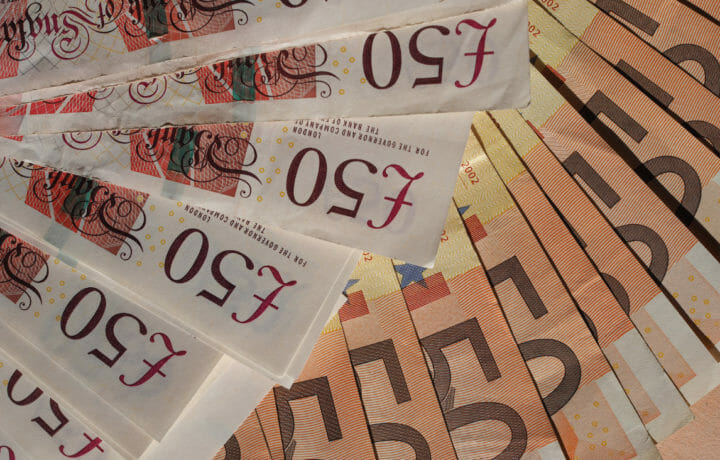The euro and the pound continue their fall against the U.S. dollar. With the Euro hitting parity with the dollar, the European currency and American currencies are now worth the same amount. Sounds good if you are a tourist, but this exchange rate is potentially problematic.
With the euro at its lowest level in 20 years, it has dropped below a one-to-one exchange rate with the dollar, several times this past week. The British pound is also approaching its lowest level in history with some analysts saying parity may be on the horizon.
The currency exchange rate is often the perception of economic prospects. There was an expectation that the European economies would see a rebound after the COVID-19 pandemic subsided, but this optimism has been replaced by recession predictions.
Parity has traditionally been a psychological barrier in the markets. However, the lower exchange rates are indicative of the European countries struggle with an energy crisis caused by Russia’s war in Ukraine.
The Russian war has only exacerbated the problem. Incredible energy prices and record inflation are to blame. Because Europe is far more dependent on Russian oil and natural gas than the U.S., the dollar continues to strengthen. Russia continues cutting natural gas supplies to the European Union in retaliation for sanctions and weapons to Ukraine. And this is having a huge financial impact on the European Union (EU). But how bad is it, really?
The Euro
After years of preparation, the euro was launched on January 1, 1999. It was considered an ‘invisible’ currency for three years, only being used for accounting purposes and electronic payments.
During the invisible years, the European currency began a long slide, falling to a record low of 82 cents in October 2000. However, coins and banknotes were launched on 1 January 2002 in 12 EU countries, causing the biggest cash changeover in history. Along with the changeover, the euro began its long-running climb, commanding strength against the U.S. dollar. The euro eventually increased to as much as $1.60 in 2008. Now for the first time in 20 years, the Euro is trading at roughly one-to-one.
The Pound
The pound has traditionally always been very strong against the dollar. In WWII, it took over $4 to buy a pound. However, in 1985, the pound was performing poorly against its U.S. dollar and at its lowest point that year, the pound was worth just $1.09. Major tax cuts under President Ronald Reagan, bolstered the American economy, and with the Federal Reserve raising interest rates, foreign investors put their money into the U.S.
Today’s poor performance is due to volatility in the UK currency. Similar to the rest of Europe, the volatility is due to soaring energy problems, inflation, and the Ukrainian War. At $1.15 per pound, concerns are rising over the dollar gaining parity with the pound.
What is the problem?
The exchange rates sound great for Americans traveling to Europe. However, the U.S. dollar gaining strength, it suggests American made goods and European travel to the U.S. will lag, especially with an EU recession.
Along with a strong dollar, overseas buyers will get less bang for their buck when trying to import U.S. goods. American manufacturers could take a hit by the exchange rate, harming exports. Further, these types of problems cause countries to try and control the situation.
Like the 1980s, protectionism could become a concern. Hard hit countries could slap tariffs on their own exports to take advantage of the dollar’s value. In the past, the U.S. worked with France, West Germany, Japan, and the UK, agreeing to depreciate the value of the dollar. This could happen again.
The greatest concern is that cohesion amongst EU member states is potentially fracturing due to the Russian caused energy crisis. The volatility, reflected in the price of the euro and pound and inflation, could prove a divisive issue with regard to the war in Ukraine.
On Monday, German Foreign Minister Annalena Baerbock warned that uncertainty over gas supplies from Russia will pose a difficult test for European Union solidarity this winter.




